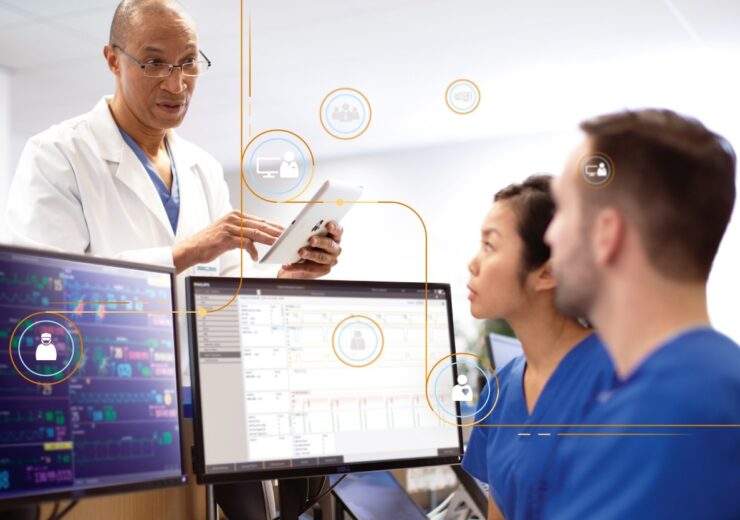The interoperability of Philips Capsule Medical Device Information Platform (MDIP) with Philips Patient Information Center iX (PIC iX) includes capturing the streaming, vendor-neutral data to provide a complete overview of a patient’s condition

The interoperability offers a comprehensive patient overview. (Credit: Koninklijke Philips N.V.)
Dutch health technology company Philips has announced the interoperability of its Capsule Medical Device Information Platform (MDIP) with its Patient Information Center iX (PIC iX).
The new interoperability feature is part of the company’s open patient monitoring ecosystem that aims to combine medical devices and systems on a single interface.
It allows clinicians to capture the streaming data freely flowing from different medical device manufacturers on an open, scalable, and secure platform.
Clinicians will have a complete overview of a patient’s condition from a single source and help caregivers make treatment recommendations, using data from the Patient Information Centre.
Philips hospital patient monitoring general manager Christoph Pedain said: “Every day, clinicians make countless care decisions based on information from divided medical devices and systems. It’s time we start caring for the carers by making data more accessible.
“By ever-improving availability and accessibility of patient information, clinicians and patients benefit through enhanced workflows, insights, improved care delivery and safety measures that may lead to better health outcomes and the better use of staff and infrastructure.”
Traditionally, clinicians are referencing multiple sources to gain a complete clinical view of the patient, as data from medical device vendors has been isolated.
Philips said that it is working on the technical problems related to interoperability, such as device-specific connectivity protocols and security challenges, to help caregivers.
The new capability involves collecting data from different non-Philips devices, such as ventilators, infusion pumps, and vital signs monitors, to present and distribute the information.
Through the Patient Information Centre as a single interface, clinicians can get a standardised view of the patient’s health, which reduces time in prioritising data from multiple sources.
Also, it improves the efficiencies in determining diagnoses and treatment decisions and allows caregivers to spend more time providing direct patient care.
Philips said that the unique vendor-to-vendor interoperability helps improve access and availability to critical patient information, supporting care delivery and collaboration.
Its open patient monitoring ecosystem will allow hospitals to better leverage digital health investments and manage devices across multiple vendors, said the health technology company.
